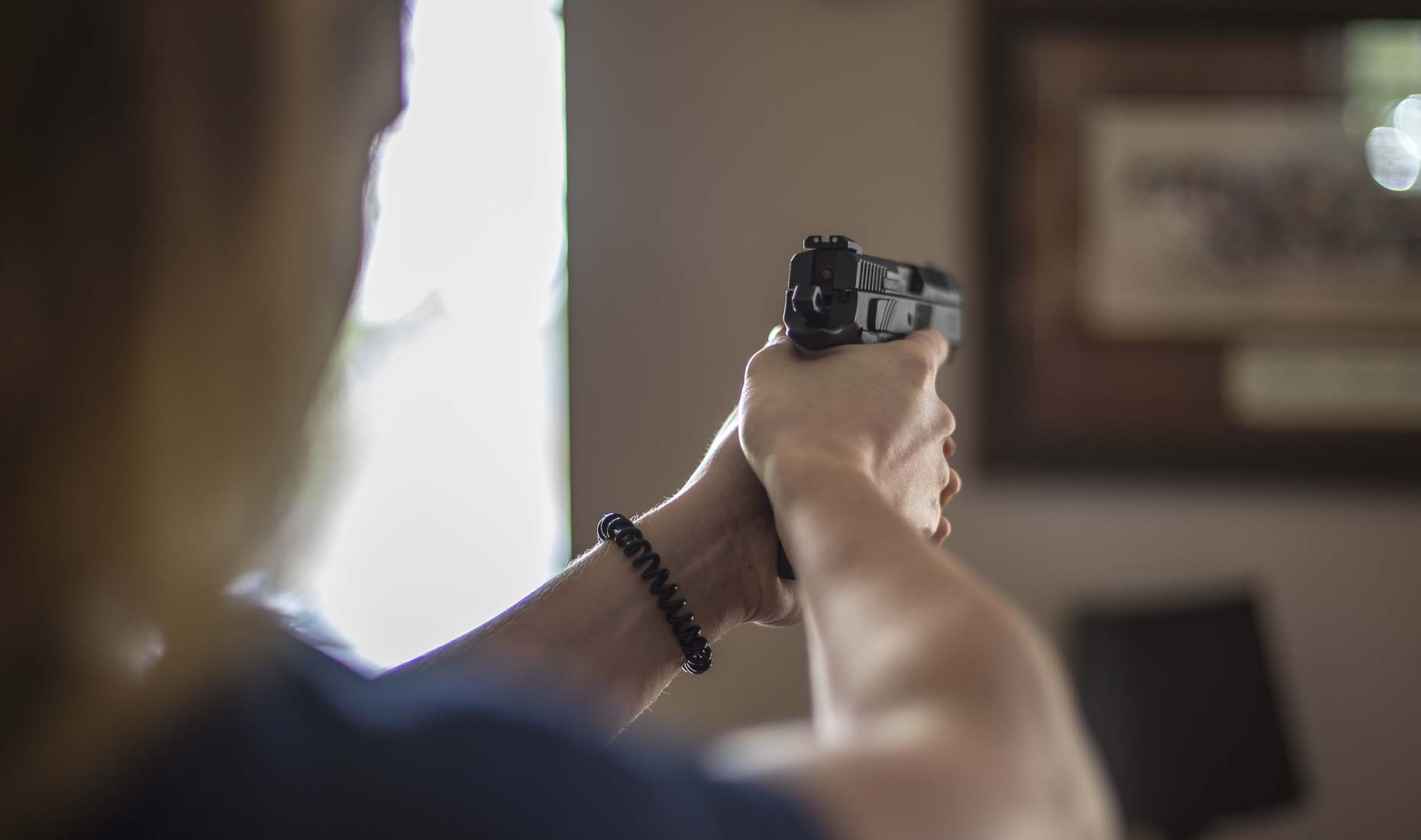By: Jess Anderson
As a beginning shooter, it’s exciting to get out to the range and work on hitting targets with your new firearm. That’s how it was for me, but after my first couple mornings at the range, that excitement faded pretty fast. Not only were most of my shots missing the target, but my grip felt uneven, I wasn’t sure if I had my sights aligned properly, my trigger pull was hasty, and it felt like I was wasting time and ammo.
The frustration of inconsistent shots and not being able to diagnose anything specific to work on only made matters worse. Something had to change, and it had to change without using up too much ammo or having to be at the range all the time practicing. So, I did my research, and what I found ended up being a helpful exercise that’s now a daily habit: dry firing.
No More Wasting Ammo
If you’re not yet familiar with the practice, dry firing is shooting your firearm without any ammunition in the gun. You’ll be pulling the trigger in your home (it’s advisable to close the blinds), and all you need to do is choose a spot on a wall and place a sticker or tape up a target to aim at. From there, you’ll be all set to start practicing. Beyond improving your accuracy, dry firing is also a great opportunity to work on safe firearm handling.
It’s crucial, anytime you’re handling a gun, to know the condition of your firearm and how to check it. Double and triple-check to make sure your gun is empty before putting your finger anywhere near the trigger guard. You should obviously be aware of what might be on the other side of the wall you’re aiming at, and never pull the trigger on anything you don’t intend to destroy, or at any target that could have something behind it you don’t want to harm inadvertently.
While dry firing is typically used to focus on trigger squeeze and finger placement on the trigger, I’ve found there are other ways to use dry firing to improve other aspects of firing and accuracy. For example, taking the time to think about grip, hand placement, and pressure while holding your firearm will improve aim and control when squeezing the trigger and better prepare you for recoil when you go to the range for live fire. If you don’t already carry, dry firing is a great way to increase your familiarity and comfort when handling a firearm and drawing from various concealed methods. Done correctly, regular dry fire practice can also help to internalize safe handling and loading/unloading of your firearm.
Finding the Time
Between work, family, and unending laundry, finding the time to fit dry firing into your day is a lot easier said than done. But it can be done, and anyone who strives to be able to effectively employ their firearm to protect themselves and their family should make the time. Just five minutes each day can make a difference, and it won’t take long until it becomes part of your regular routine.
For me, it’s one of the first things I do in the morning. While my coffee brews, I set a timer for five minutes and do nothing but focus on dry firing. Time that would otherwise be spent checking email or watching the news is now better spent on improving accuracy, sight alignment, and comfort with handling my gun. If you have a few minutes to spare in the morning, I challenge you to give it a shot. If you don’t usually have time in the morning, there are other ways to incorporate dry firing into your day. Try it before getting in bed at night, or take some time to dry fire before sitting on the couch and watching TV after work.
You can also try merging dry firing with an existing habit or routine. If you meditate for five minutes each day, try meditating around dry firing. Focus on your trigger squeeze as you inhale and exhale, zero-in on the target in front of you and maintaining calm in a physically strained position. Did you make a resolution to run or be more active? Once you get home from a run or a workout, before hopping in the shower, spend a few minutes dry firing with your heart rate elevated and an increased rate of breathing.
Taking the time to dry fire will make proper grip, sight picture, and focus a habit, and with a smooth trigger squeeze, your accuracy and aim will likely improve, and safe firearm handling will become second nature. With those elements fine-tuned, you’ll not only save money on ammo by practicing without it, but you’ll also be able to use your range time more efficiently.
Jessica Anderson is a freelance writer from Iowa. Contact her at [email protected].
Photo Credit: Thadeus Krehbiel
Editor’s Note: The featured photo was taken in front of a brick wall, and the photographer and model ensured nothing was behind the wall that they shooter did not intend to destroy.

